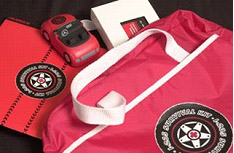2.0 Designing a Public Information and Outreach Campaign for Work Zones
For work zones, particularly those deemed to have a sustained impact on safety and mobility, a transportation agency will often need to design and implement a public information and outreach campaign. The campaign should include appropriate goal statements, strategies, and methods/approaches for reaching those goals. The sections that follow discuss, in general, the steps needed to develop a campaign. Each section also provides examples from work zone projects around the country. This discussion may not cover all of the circumstances of every work zone, but provides helpful information on the main public information and outreach elements that those responsible for planning and operating work zones will need to consider.
The updated Rule defines a category of projects expected to cause a relatively high level of disruption. These projects are called "significant projects." [1] The Rule requires the use of public information and outreach strategies for significant projects (see Section 1.5 for more information).
2.1 Determine the Appropriate Size and Nature of the Campaign
The size and nature of a public information and outreach effort should ideally be determined by the anticipated impacts of the road construction project. For a short-lived, small project causing minor traffic disruption, public information and outreach may be limited to routine publication of details in an agency newsletter, web site, and/or other traveler information outlet. For a longer, more disruptive work zone, a more elaborate public information and outreach campaign may be warranted. However, most planned and unplanned (emergency) work zones should incorporate some form of public information and outreach.
A range of elements should be considered when determining the size and nature of a public information and outreach campaign. These include the effects of the project on:
- Traffic delay and safety at both the corridor and network levels, including the effects on parallel corridors and alternate routes.
- Traffic delay and safety at nearby intersections, interchanges, and railroad crossings.
- Special traffic and safety conditions such as heavy truck traffic, steep grades, and poor weather.
- Disruptions of other modes of transportation including public transportation, airports, rail terminals, and ports.
- Evacuation routes.
- Hazardous material transportation routes.
- Emergency responders (hospitals, fire stations, military installations).
- Other public and private entities (such as schools and universities).
- Planned special events (sporting events, holiday parades, concerts, etc.).
- Businesses and residences.
If a work zone is relatively small and of short duration, determining its effects may require nothing more that an informal consideration of these factors. In other cases, determining the effects of a work zone and the needs of a public information and outreach campaign may require some significant data gathering and analysis. More information about assessing work zone impacts and developing transportation management plans (TMPs) to mitigate those impacts can be found in Work Zone Impacts Assessment: An Approach to Assess and Manage Work Zone Safety and Mobility Impacts of Road Projects, and Developing and Implementing Transportation Management Plans for Work Zones [2].
Much of the information necessary to determine the need for a work zone public information and outreach campaign, including traffic levels, vehicle types, and congestion, is likely available from agency sources. However, determining the effect of a work zone on traffic may require the use of analytical tools. QuickZone is one traffic impact analysis tool that can be used to estimate work zone delays [3]. It allows road owners and contractors to compare the effects of various alternatives for doing road work, such as performing work at night instead of during the day, or of diverting the traffic to different roads at various stages of construction.
In some cases, information will be available from research conducted in the planning stages of the project.
In evaluating options to add capacity to I-15 from 10600 South to the Alpine interchange in Utah County (S.R. 92), the Utah Department of Transportation (UDOT) conducted a telephone survey and an online survey of travelers on this stretch of highway. Among other things, the surveys collected information on the types of travelers (commuters/non-commuters and demographics, etc.), the levels of and reasons for dissatisfaction with traveling on the road, and the prevalence of Internet use and knowledge of the UDOT web site.
Source: Utah Department of Transportation, I-15 South – Utah County Line to 10600 South Project, URL: http://www.dot.utah.gov/i15utahcounty/index.php (Accessed 11/15/05).
For long-term projects, determining needs may be an ongoing process. Information collected formally (traffic delay data, public opinion surveys, etc.) and informally (community meetings, letters of complaint, etc.) can be helpful in identifying when the plan for the campaign may need to be adjusted to address changing conditions or varying degrees of effectiveness.
For its Rebuilding I-235 project in Des Moines (stretching from 2002 through 2007), the Iowa Department of Transportation conducts an annual survey to measure: (1) current travel behavior on I-235; (2) employer-offered commuting option incentives and use of those options; (3) motivators to use travel modes other than single occupancy vehicles; (4) frequency of construction–related problems and responses to those problems; and (5) methods of delivering and usefulness of I-235 construction information.
Source: Iowa Department of Transportation, "I-235 Reconstruction Project, 2004 Communications Plan, Approved January 8, 2004."
2.2 Identify Resources
To be successful, a public information and outreach campaign must be supported with sufficient resources. Public information and outreach, therefore, is an important consideration when developing road construction project budgets. Such expenditures are not frivolous. Experience has shown that the benefits of a public information and outreach campaign are likely to outweigh the costs.
The California Department of Transportation (Caltrans) has found that during construction projects "public information is the mitigation strategy that gives us the 'biggest bang for the buck' – its effectiveness is greater in urban areas, but still holds true in rural areas."
Source: Quote from Robert Copp, California Department of Transportation, used in Transportation Management Plans for Work Zones fact sheet (FHWA-HOP-05-022), URL: http://www.ops.fhwa.dot.gov/wz/resources/tmp_factsheet.pdf (Accessed 11/18/05).
Both internal agency resources and external resources can play a role in developing and implementing a public information and outreach campaign for a road project. Internal resources include agency personnel and agency owned facilities and equipment. Personnel may include a project manager, public relations expert (to communicate with the mass media and public), graphic designer, and webmaster. In some cases, a transportation agency may need to create a new temporary or permanent position to deal with work zone-related public information and outreach. Other internal resources include many of the agency's community and traveler information systems including web sites, highway advisory radio (HAR), 511, dynamic message signs, and dedicated radio and TV stations.
Resources external to a transportation agency will also be helpful to conducting a public information and outreach campaign. This may include paying for public relations expertise (possibly including graphic design, web design, and writing); radio, TV, and newspaper advertising; printing; or a public information center or kiosk. Such costs can vary widely. Agencies can leverage and stretch their resources by incorporating the use of available resources that are low cost or free of charge. External resources that may be essentially free of charge include radio and TV traffic broadcasts, newspaper articles, and help from project partners.
TIP: Take advantage of free media, such as news broadcasts and traffic radio, to provide project information. This will require establishing relationships with the media to ensure they report the correct information.
The budget for a work zone public information and outreach campaign will depend on several factors, including the size and nature of the campaign (discussed in Section 2.1); the communication strategies selected (discussed in Section 2.6); whether the selected strategies are already established in the agency and can readily be used; and the role of partners (discussed in Section 2.3). For the campaigns researched for this Guide, in some cases agency staff were not able to provide specific estimates of campaign expenditures because some or all of the work was done in-house with staff time and internal resources, or budgets associated with the work zone public information and outreach campaign were folded into budgets for general agency or project outreach. Some of the campaigns reviewed for this Guide had expenditures of less than $50,000, while other campaign budgets were as much as several million dollars. In general, agency staff that were able to provide estimates cited campaign expenditures such as 0.3 percent or 1 percent of the overall project budget.
2.3 Identify Partners
In both the planning and implementation stages of a public information and outreach campaign the lead agency should consider working with a range of partners. Partners in the public information and outreach process may include: (1) State and local agencies (including neighboring jurisdictions, transit providers, port authorities, and emergency responders); (2) elected and appointed public officials; (3) work zone personnel (e.g., construction contractors, traffic control providers, law enforcement); (4) major employers and service providers (e.g. hospitals) in the affected area; (5) other groups such as transportation management associations, neighborhoods associations, business associations, etc; (6) traveler information providers, including radio, TV, and newspapers; and (7) planned special event coordinators. The major reasons for including these partners are:
- To establish lines of communication. Such connections will be particularly important during major periods of disruption and when changes occur. In its plan for building the Tacoma Narrows Bridge, for example, the Washington DOT made it a goal to connect with the staff of elected officials in order to provide them with information to respond to constituent inquiries.
- To distribute information. Involving outside groups in the planning of an outreach campaign is in itself a way to distribute information. Holding a meeting with the aim of soliciting community input, for example, is also a way to inform the public of disruptions and plans to deal with them.
- To improve the product. Partners in developing outreach strategies will bring unique perspectives about successful types of message and methods of communication. This may be particularly important in areas with diverse population groups (e.g. non-English speaking communities, truck drivers, the elderly).
- To share the costs. Partners may be willing to share the costs of producing materials or to provide free forms of advertising. For example, major employers are often willing to incorporate messages in company communications including newsletters, web sites, or even by including flyers with pay slips.
One way to obtain input from affected parties is through a community task force, made up of stakeholders from the community likely to be impacted by the work zone. Ideally developed during the planning stage of the project, the objective of creating such a task force is to obtain input and review/comment on the development and implementation of construction and transportation management strategies to minimize the impacts of the project on the community. Both the contractor and transportation agency may meet with the task force(s) to obtain input and recommendations at various stages of the project delivery process starting during planning and extending through design, construction, and project assessment. An agency may be able to identify campaign partners from a community task force, which is composed of members already highly interested in the project.
While meeting with all stakeholders is important, meeting specifically with local businesses and business organizations is often a very important element of a public information and outreach effort. Businesses are a conduit for providing project information because they have a vested interest in communicating what they know with customers and suppliers. In addition, these meetings provide businesses the opportunity to suggest ways a project can be managed to minimize any negative effects.
In order to perform construction work on I-29 in Fargo, North Dakota the main entrance to a nearby mall needed to be closed for three months. The project staff worked with the mall's management to change the timing of the closure to minimize its effects and to coincide with a $19 million reconstruction of the mall.
Source: Presentation given by Kevin Gorder, Project Manager for I-29 Project, North Dakota DOT, at the FHWA Work Zone Focus State Workshop, April 19, 2005, URL: http://www.ops.fhwa.dot.gov/wz/publicinfostrategies.htm (Accessed 10/19/05).
2.4 Identify Your Target Audiences
A key to any public information and outreach campaign is to identify the target audience(s). This will help to determine the types of messages that need to be conveyed and the best methods of communicating those messages. Ultimately, the target audiences are travelers or potential travelers. However, travelers can be thought of in different ways and they can be reached through different methods (either directly or through some type of organization, such as a community group). Audiences, therefore, can be conceived of in three overlapping categories: types of travelers, types of trip generators, and types of people (see Table 2.1).
| Types of Travelers |
|---|
|
| Types of Trip Generators |
|
| Types of People |
|
Clearly, the major audience for a work zone public information and outreach campaign is travelers. But travelers are not all alike. A traveler may be reached pre-trip or en route, and may have different means of receiving information. Pre-trip travelers, accessing information through a project web site or TV report, for example, may be more likely to change trip timing, mode, route, and destination than travelers already on their way. Travelers en route, with good timely information via radio, dynamic message signs, or 511, may also alter some characteristics of a trip (particularly their route) to lessen delay.
Personal travelers also differ in terms of the purpose of a trip. A major distinction is between commuters and non-commuters. Commuters tend to be very aware of travel conditions (and thus relatively easy to inform) but less flexible about aspects of their trip, particularly the origin and destination. Non-commuters by contrast are typically harder to reach but may be more likely to respond to messages about changing the timing of a trip and their destination.
Another distinction is between local and non-local travelers. Non-local travelers are generally harder to identify and inform about a road construction project. Moreover, the information needs of non-locals may differ because of the nature of their trips and their unfamiliarity with the area. Such factors are particularly important in tourist areas and near passenger terminals (airports, ports, Amtrak stations, etc.). It may be necessary to publicize information in different ways and in a wider area for non-local travelers.
The I-95 Corridor Coalition produces a brochure twice a year on work zones (and other potential problem areas) for distribution to travelers up and down the east coast. The brochure, shown in Figure 2.1, is distributed to welcome centers, rest areas, transportation agencies, private companies, and individuals and may also be downloaded from the Coalition's web site (http://www.i95coalition.org). The Coalition prints approximately 275,000 copies of each brochure.
Source: I-95 Corridor Coalition, URL: http://www.i95coalition.org (Accessed 11/22/05).
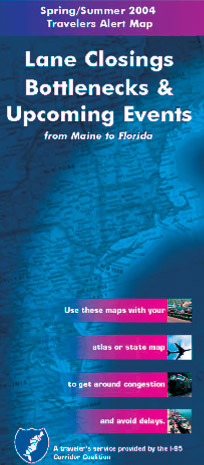
Figure 2.1 Informational Brochure Produced by I-95 Corridor Coalition (Source: http://www.i95coalition.org)
Commercial drivers are another group who may have different needs for work zone information because of tight schedules, oversize or dangerous loads, and overnight travel. When planning a work zone public information and outreach campaign, therefore, it is important to consider if the work zone affects a route with heavy truck traffic and/or if the work zone is close to a freight terminal (port, airport, etc.). Truckers carrying special loads (oversize, hazardous materials) may need to avoid a work zone entirely. Other types of commercial drivers (such as ambulance drivers) may also require special attention.
During the I-65 construction project in Kentucky involving full closure on weekends, the public information and outreach campaign included a component specifically targeted to truckers. This involved publicizing project details and alternate routes in a direct mailing of flyers to trucking companies, use of trucking industry newsletters, and the CB radio network.
Source: Interview with Kentucky Transportation Cabinet personnel, June 2005.
Another way to determine target audiences is to identify major trip generators near the work zone, such as major businesses, stadiums, airports, and the organizations that represent them. A good, early step in developing the public information and outreach campaign is to develop a list of the main trip generators in the affected area. These entities will need help in minimizing the impacts of the work zone on their customers and suppliers and are another avenue to reach travelers.
To help businesses during the I-235 reconstruction in Des Moines, Iowa DOT distributed Business Survival Kits with a booklet "Tips and Tactics for Continued Success During I-235 Reconstruction," a survival video, and other materials.
Source: Iowa Department of Transportation, "I-235 Reconstruction Project, 2004 Communications Plan, Approved January 8, 2004" and I-235 project web site, URL: http://www.i235.com.
The Indiana DOT developed the following tips for businesses during its Hyperfix 65/70 project. This information comes directly from the Hyperfix 65/70 project web site.
"Hyperfix 65/70 will require ramp closures and detours that may change the way you do business. Here are some things you can do to minimize the effects of construction on your business.
Be a source of information. If a ramp is closed near your business, consider sending a flyer or an e-mail postcard to inform your customers of an alternate route. Maps from the Hyperfix 65/70 Web site can be downloaded and used in these materials. You can place handouts near the cash register or in a convenient location by the door. For regular customers, consider including flyers with billings or other mailings.
Educate your suppliers. When placing orders, make sure your suppliers know about construction and detours. The Hyperfix 65/70 Web site can provide alternative routes and directions to your business from any part of the city affected by the shutdown.
Work with your employees. If possible, consider offering your employees flexible hours that can increase time spent doing good work and decrease commuting time.
Stay informed. As construction proceeds, some closed ramps will reopen and some open ramps will be closed. It's important to stay up to date on changes so you and your customers know what to expect. INDOT will help with media announcements and updates to the Hyperfix 65/70 Web site. We'd be happy to provide you with e-mail updates and alternative routes."
Source: Indiana Department of Transportation, Hyperfix Web site, URL: http://www.in.gov/dot/div/specialprojects/hyperfix/ (Accessed 1/25/05).
An outreach campaign also needs to take into consideration the different types of people affected by a work zone. Certain groups may need special information or information provided in a different way. Residents who live near an upcoming work zone are often a primary audience since they may be affected by the work zone on a daily basis. One of the most common situations is a large group or groups of limited-English speaking residents.
For the Octavia Central project in San Francisco, California, under construction from 2003 through 2005, some of the project information was provided in Spanish, Chinese, Japanese, Korean, Tagalog, and Russian to accommodate various ethnic groups living in the area.
Source: California Department of Transportation, The Octavia Central project web site, URL: http://www.octaviacentral.org/ (Accessed 10/19/05).
Other segments of the population that may warrant special consideration are the elderly, children, and the disabled. Children can be conduits of information to parents (as well as being motorists of the future).
The public information and outreach campaign for the Virginia Department of Transportation's Springfield Interchange project specifically targeted several retirement and nursing homes for the elderly near the project to inform them of the impacts of the project and need for extra caution.
Source: Interview with Virginia DOT personnel, June 2005.
The Illinois DOT visited schools with a costume version of their character "Jack Hammer" before the Upgrade 74 project in Peoria, Illinois to "inform children of the construction and to instruct them to remind adults to drive safely and slowly while in a work zone." The image below shows Jack Hammer with elementary school principal June Tyler.
Source: Illinois Department of Transportation, Upgrade 74 project web site, URL: http://www.upgrade74.com/cruft/hkchicago.com/safety/safety.htm (Accessed 1/31/05).
In Santa Cruz, California, blind pedestrians were specifically targeted in the public information and outreach campaign for a work zone affecting downtown sidewalks.
Source: Interview with Santa Cruz City Redevelopment Agency personnel, June 2005.
2.5 Develop the Campaign Message(s)
Successful work zone public information and outreach campaigns generally incorporate three messages:
- Safety first
- Plan ahead to minimize delay
- We care
The specific details of the work zone messages should be tailored to the circumstances of the work zone and audiences identified for the campaign.
2.5.1 Safety First
Encouraging motorists to take safety precautions to protect themselves and highway workers is the most important message to convey to drivers. Drivers should be continuously reminded to adhere to posted speed limits and stay alert (for lane changes, slowing traffic, etc.) to prevent crashes. This can be reinforced with warnings about increased traffic fines and enforcement activity if appropriate. Agencies may also want to provide facts about work zone crashes.
A number of transportation agencies have developed work zone driving tips. These driving tips often include:
- Adhere to posted speed limits.
- Pay attention.
- Use proper turn signals for lane changes.
- Do not weave in and out of traffic.
- Keep a safe distance from the car ahead.
- Minimize distractions such as using cellular telephones.
- As always, buckle up.
- For your safety and the safety of others, watch for lane/ramp closures and detour signs.
- Continue to pay attention to work zone signs, even when the work is long-term or widespread.
- Remain calm.
Source: Adapted from Virginia Department of Transportation, Springfield Interchange Project, URL: http://www.springfieldinterchange.com (Accessed 11/22/05).
TIP: Safety tips can be included on outreach materials with another primary purpose.
2.5.2 Plan Ahead to Minimize Delay and Frustration
The disruptions caused by a work zone can be reduced if travelers plan ahead. Additionally, if travelers know what to expect they will be less frustrated about delays. Another general message that should be conveyed to the public, therefore, is to think ahead about the timing of travel, the route, the mode, and the destination. The specific messages concerning these thoughts will typically form the centerpiece of a public information and outreach campaign.
In 2000, the Arkansas State Highway and Transportation Department (AHTD) set out to rebuild or resurface over 350 aging Interstate miles in a 5-year time frame. Realizing that potential negativity arising from serious crashes and traffic delays could have an impact on the continuation of the program's accelerated time frame, AHTD create a safety and information campaign entitled Pave The Way, along with the sub-theme, Think Ahead. Through the campaign, motorists were encouraged to plan for construction while staying focused on the end result.
Source: Fact Sheet 9 – Arkansas Uses Public Outreach to Pave The Way During Interstate Rehabilitation, FHWA-OP-04-031, Summer 2004, URL: http://ops.fhwa.dot.gov/wz/practices/factsheets/factsheet9.htm (Accessed 11/22/05).
2.5.2.1 Work Zone Details
The current details of a work zone can be provided through a variety of public information and outreach strategies, including the web, project hotline or 511, newspaper articles, dynamic message signs (DMS), and others. At a minimum the details of a work zone should include the dates and times of work zone activity and the routes, lanes, and ramps affected. If these details are changing, it is important to provide the most current information. Incorrect and out-of-date information can compromise the effectiveness of a public information and outreach campaign. One study of work zone information posted on web sites found that although project location, purpose, and overall duration are often posted early in the planning process they are unlikely to be updated. Moreover, traveler information such as the number of lane closures, closure duration, and estimated delay are reported less frequently. The study found the number of lanes closed was reported 37 percent of the time, closure duration 22 percent, and a quantitative estimate of delay only 7 percent [4].
2.5.2.2 Travel Times and Delays
Public information on travel times and delays can range from very general (e.g., "Expect delays") to very specific (e.g., "Travel time through work zone is 20 minutes"). More specific information is generally more useful to travelers, and preferable when it is available. Travel time and delay information can also be presented as average or typical conditions for the work zone or real-time conditions. In some cases, travel delay can be provided in general terms by indicating that there is an average 10-minute delay, for example, during the morning and afternoon peak periods. Better still is real-time traveler information provided by traffic cameras and travel time displays. Travel time and delay information may be provided to drivers pre-trip (e.g., via web sites, emails, pages, or telephone) or en route (e.g., via DMS). Some agencies include a date and time stamp with their information to indicate that it is current. Figure 2.2 illustrates a camera image showing traffic conditions on I-215 in Utah. The image includes the route name and the date and time the image was taken.
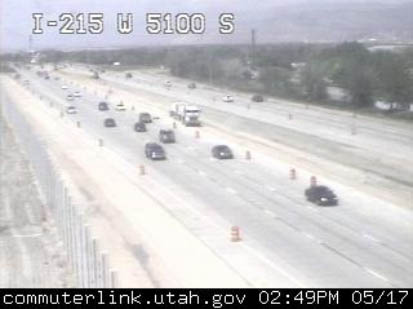
Figure 2.2 Work Zone Traffic Camera Image on Utah DOT's Web Site. (Source: http://www.commuterlink.utah.gov)
2.5.2.3 Alternate Methods and Modes of Transportation
Reducing the amount of traffic through a work zone is one way of reducing congestion and travel delay. This may involve providing detailed information on carpooling/ridesharing, transit, park and ride, and telecommuting options. Messages regarding telecommuting may be targeted to major employers as well as commuters.
During the Springfield Interchange Project, the Virginia Department of Transportation developed a wide range of commuting options that it publicized on its project web site and elsewhere. These include:
- Free parking and a shuttle running from the nearby Springfield Mall to the Franconia-Springfield Metro Station.
- New and bigger park and ride lots in the I-95 corridor affected by the project.
- A program known as "telework!va" that is designed to help a company start or expand a telework program with financial support from the State of up to $35,000.
- Extra commuter trains and buses for residents to avoid the Springfield Interchange.
- A local bus service to travel throughout the Springfield business district.
- Information on starting a buspool, carpool, or vanpool.
- A guaranteed ride home program.
- Information for employers and employees on how to get tax-free transit benefits.
- Bicycling information including taking bikes on transit, good bicycling routes, and lockers.
- How and where to buy transit tickets and to get more information.
Source: Interview with Virginia DOT personnel, June 2005. Information about commuting options is available on http://www.springfieldinterchange.com/cs.asp (Accessed 11/22/05).
TIP: Place links to web sites for transit and other commuting options on the work zone project web site
2.5.2.4 Alternate Routes
In many cases alternate routes will need to be devised and communicated to travelers. These routes may be different depending on the type of driver (local, long distance, commercial drivers) and timing. Alternate route messages are essential when construction involves shutting down an entire route. Alternate route messages may involve DMS located at decision points for drivers. There are a variety of means for communicating alternate routes. Handing out alternate route maps, such as the one in Figure 2.3 or providing alternate route information in flyers, brochures, or other handouts, such as in Figure 2.4, are just two possible options.
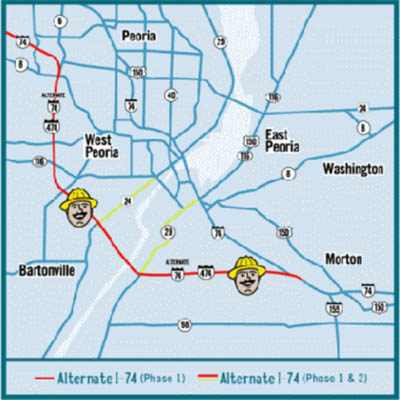
Figure 2.3 Map showing alternate routes during the Upgrade I-74 project in Peoria, Illinois. (Source: Illinois DOT, http://www.upgrade74.com/)
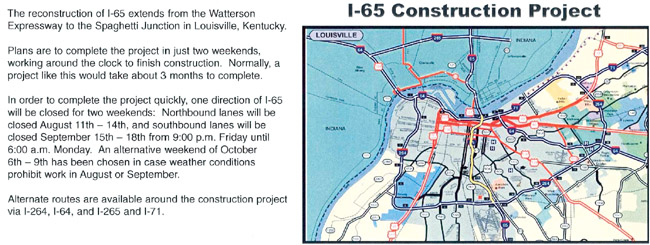
Figure 2.4 Alternate route information on flyer specifically targeted to truckers affected by the weekend full closure of I-65 in Louisville, Kentucky. (Source: Kentucky Transportation Cabinet)
2.5.3 We Care
Motorists are more willing to cope with disruptions and cooperate with directions when they feel that all necessary steps are being taken to make things easier. Acceptance of inconvenience related to the work being performed is more likely with a genuine message from those involved. Thus, public information and outreach strategies should incorporate details of the project including what is involved, the duration of the work, the benefits, and periodic updates about how the work is proceeding, such as shown in the graphic in Figure 2.5.

Figure 2.5 Graphic from Upgrade 74 project web site used to show progress on the project. (Source http://www.upgrade74.com/)
2.6 Determine Communication Strategies
After identifying the appropriate audience and messages for the work zone project the next step is to determine the strategies that will be used to get the messages to the target audiences. There is a wide range of ways to communicate with the public about work zones. The strategies used must be tailored to the project context, the message being conveyed, and funding limitations.
Table 2.2 provides a number of communication strategies for disseminating work zone messages.
|
|
|
|
|
|
|
|
|
|
|
|
|
|
|
|
|
|
|
|
|
|
|
|
|
|
|
|
Communication strategies can be modified to fit the needs of the project for which they are being used. A combination of several of strategies may make sense for some projects, while only one or two of the strategies may be necessary for other projects. Typically there will be a significant amount of interaction between different means of communication. For example, informational materials such as brochures and fact sheets are often posted to project web sites, thereby making them more widely accessible. Similarly, information posted to project web sites or gained from project materials may be used by news media to provide information through newspapers, the radio, and television news. Furthermore, drivers are likely to use a variety of different means of communication, meaning that messages must be consistent across all communication strategies. A driver who reads something in the newspaper stating that road closures will be occurring over the weekend could potentially refer to the project web site for further information. It is important that the information on the web site is consistent with what was in the newspaper, and also expands on that information by providing more details.
TIP: Use as many communication strategies as needed to effectively communicate work zone information to all target audiences, but ensure that a consistent message is used throughout.
In general, the largest proportion of the public tends to notice information provided by the mass media outlets, including newspaper articles and traffic news. In a survey done for the Central Freeway Replacement Project in San Francisco, California, newspaper articles and TV news, followed by freeway signs, were mentioned as communication methods the public noticed the most (see Figure 2.6). These sorts of statistics will vary from place to place and over time as media usage changes. For instance, web sites are increasingly the place people go first for information prior to getting in their car, while dynamic message signs are becoming more widely used for in-route information.
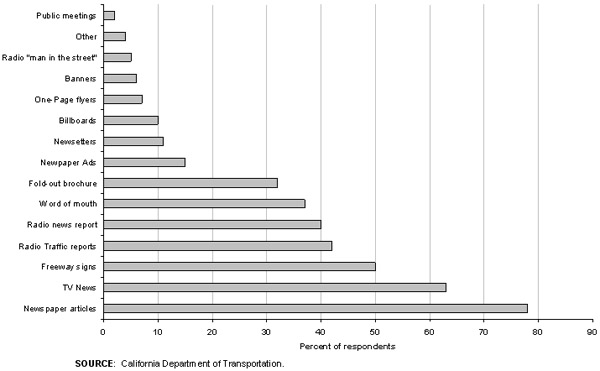
Figure 2.6 California DOT's Central Freeway Replacement Project: What Did the Public Notice?
In its study of public outreach for the Rebuilding I-235 project, the Iowa DOT found that:
- Those who saw the special section in the [Des Moines] Register in June are more aware of the I-235 Web site and more likely to use DriveTime radio reports.
- Those who received the I-235 Travel Planner are more aware of the I-235 Web site, DriveTime radio reports, and the Avoid the Rush business commuter program.
- Those who saw the DOT ads on Wednesdays and Sundays in the Register are more aware of the I-235 Web site, project office, DriveTime Radio reports, 511, and the Avoid the Rush campaign and are more likely to use project maps throughout the community.
Source: Iowa Department of Transportation, "I-235 Reconstruction Project, 2004 Communications Plan, Approved January 8, 2004."
Section 4 goes into more detail about communication strategies, further describes those strategies that are typically employed, and provides examples of how States have used these strategies.
2.7 Determine When to Communicate
Providing information to the public should not be limited to when a work zone is up and running. A public information and outreach campaign should also consider strategies to be implemented before construction begins and after the project is complete. In the before phase, the campaign should concentrate on general information about the project, the problems it may cause, and how to find out more information. This might involve a range of outreach and communication methods such as working groups/planning advisory groups, public workshops, a project web site, print media, legislative briefings, and branding. Near the commencement date of a work zone, it may be appropriate to add other methods such as free media coverage and paid advertising, a telephone "hotline," and the use of dynamic message signs.
After the completion of the project, an agency can provide information about successes and failures of the project and thank project partners. This is a chance to enhance the image of the transportation department as a government agency with a customer-driven focus.
After completing the I-64 project, the Kentucky Transportation Cabinet ran full-page newspaper advertisements to inform the public the project was finished, to thank those involved, and to publicize the project was completed three weeks ahead of schedule.
Similarly, after completing the I-670 full closure, the Ohio DOT held a celebration and ribbon-cutting ceremony to publicize the end of the project and thank the public for their patience during the project. The Governor of Ohio, the mayor of Columbus, and the Director of the Ohio DOT gave presentations at the event, which was held under a bridge on the rebuilt section of I-670. Following the event, the public had the opportunity to take trolley tours of a new section of I-670.
Sources: Interview with Kentucky Transportation Cabinet personnel, June 2005.
The Columbus Dispatch, "Wait is Over: I-670 Opens Today", by Brian Williams, September 19, 2003.
The project web site may also be used to publicize information about project completion. Some people may only occasionally travel the area and may be checking to see what is happening. An old web site, if not updated or removed, can become an ambiguous source of information and cause confusion about whether or not the work zone is still in place. If the web site is removed, it is recommended that agencies retain ownership of the web site domain name for a period of time following completion of the project in order to prevent others from purchasing the domain name and using it for undesirable means.
2.8 Evaluate Effectiveness
Evaluating the effectiveness of a public information and outreach campaign should be part of an agency's long-term effort to improve safety and mobility in and around work zones. During a long road construction project it is advisable to periodically evaluate the effectiveness of the public information and outreach campaign with the aim of redirecting resources if necessary. An evaluation might include:
- Documenting and reporting the impacts of the work zone, such as the number of crashes and traffic delay.
- Documenting and reporting the questions, comments, compliments, and complaints received via hotline, web site, letter, etc.
- Assessing perceptions of successes and failures among the project partners.
- Surveying the public, businesses, or commercial truck drivers affected by the work zone.
- Surveying tourism bureaus or other major facilities near the work zone, such as rest stops.
One of the best ways of evaluating the effectiveness of a public information and outreach campaign is through a statistically valid telephone survey. Items assessed may include the following:
- Awareness of the project and project information resources.
- Changes in travel behavior including trip timing, routes, travel modes, and destinations.
- Employers' provision of incentives such as flexible schedules, transit payments, company vanpools, etc.
- Travel problems encountered.
- Levels of traveler dissatisfaction.
- Methods of accessing work zone information.
- Usefulness of the information.
- Knowledge of the reasons for the construction project.
- The Rule defines a significant project as one that, alone or in combination with other concurrent projects nearby, is anticipated to cause sustained work zone impacts that are greater than what is considered tolerable based on the respective agency's policy and/or engineering judgment. Per the Rule, this automatically includes Interstate System projects in a Transportation Management Area that occupy a location for more than three days and have either intermittent or continuous lane closures.
- Available at http://www.ops.fhwa.dot.gov/wz/resources/final_rule.htm.
- QuickZone is a work zone delay estimation model developed by the Federal Highway Administration's (FHWA's) Research, Development and Technology (RD&T) program. QuickZone helps project planners and engineers obtain an estimate of delay, queuing and user costs associated with alternate work zone design and mitigation strategies. More information is available at https://www.fhwa.dot.gov/research/topics/operations/travelanalysis/quickzone/.
- A Snapshot of Summer 2001 Work Zone Activity: Based on Information Reported on State Road Closure and Construction Websites, U.S. Department of Transportation, Federal Highway Administration, February 2003, http://ops.fhwa.dot.gov/wz/docs/2001wz_snapshot.pdf (Accessed 06/10/05).
